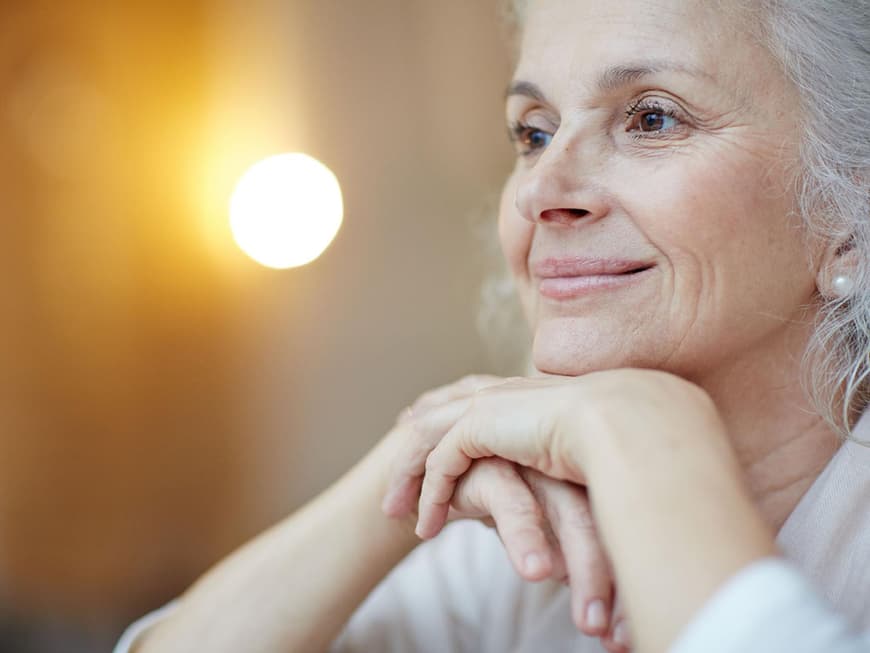
What are age spots and how do they develop?
Age spots are yellowish-brown to dark brown spots that occur more frequently in people over the age of 40. Basically, age spots are a benign pigment disorder caused by sun exposure and, to a lesser extent, by a genetic predisposition. Over the course of a lifetime, the skin is almost inevitably exposed to strong exposure to natural UV light - and reacts to this with the formation of age spots. The translation of the Latin name reflects this developmental factor: age spots literally translate as "sun spots". Generally speaking, this can be deduced: The more frequently and intensively a person is exposed to the sun day after day, the earlier and more frequently age spots can develop. As the face and hands usually get the most sun in everyday life, they are also affected particularly often.
Should age spots be removed for medical reasons?
Doctors agree on this point: age spots generally do not need to be removed. The harmless pigment changes do not cause any health problems and are only classified as an aesthetic nuisance. However, it is essential to check the skin changes regularly, as other diseases such as melanoma, white skin cancer or keratoses can occur in addition to age spots as a result of sun exposure. However, if these diseases are detected early as part of routine screening, they can usually be treated effectively.
How can age spots be removed?
Even if there is no medical necessity: Age spots are often considered annoying, especially by women. However, there are various effective methods available for safely removing age spots.
- The most effective treatment method for removing age spots is laser treatment. When the spots are irradiated with an intense beam of light, the pigment deposits are broken down into tiny particles. This triggers a desired inflammatory reaction that activates immune cells and results in the removal of the destroyed pigments. After laser treatment, some patients experience a reaction similar to sunburn, but this only lasts for a few days. About two weeks after the treatment, the lasered area is completely healed. Only in rare cases does the procedure need to be repeated in order to completely remove dark age spots in particular.
- In addition to the laser, bleaching creams are also frequently used to remove age spots. The active ingredients contained in these creams reduce pigment formation or lighten the spots over time. However, this treatment method takes several weeks before the first effects become visible. In addition, skin defense reactions such as redness or swelling sometimes occur.
- With chemical peels, the removal starts with the removal of the top layers of the skin. With the help of fruit acids in higher concentrations or stronger acids, parts of the dermis are removed in addition to the epidermis, so that the age spots disappear. However, chemical peels are highly irritating to your skin and should only be used by experienced general practitioners.
- Dermabrasion is based on a similar principle of action: the skin is mechanically abraded using an abrasive instrument. During dermabrasion, the skin is locally anesthetized. As scars or permanent redness occasionally occur as a result of the treatment, it is rarely used nowadays.
- For the same reason, cold treatment is no longer a standard procedure for removing age spots. The affected areas of skin are frozen with liquid nitrogen in a treatment known as cryotherapy.
Regardless of the specific treatment method, one thing can be said for the removal of age spots: You should avoid the sun as much as possible for some time after the treatment. Depending on the procedure, doctors recommend staying out of the sun for several weeks or even up to three months. For this reason, it is best to undergo treatment in the cold half of the year when the sun is not so strong. It is also essential to use a sun cream with a high sun protection factor and additional UVB protection.
What home remedies can be used?
A first effective approach to preventing the development of age spots results from the causes mentioned above: you should avoid too much sun exposure and attach importance to good sun protection. It is also recommended to apply lemon juice or vinegar several times a day. The substances they contain are said to lighten age spots. Other "natural bleaching agents" include garlic, buttermilk and parsley.
